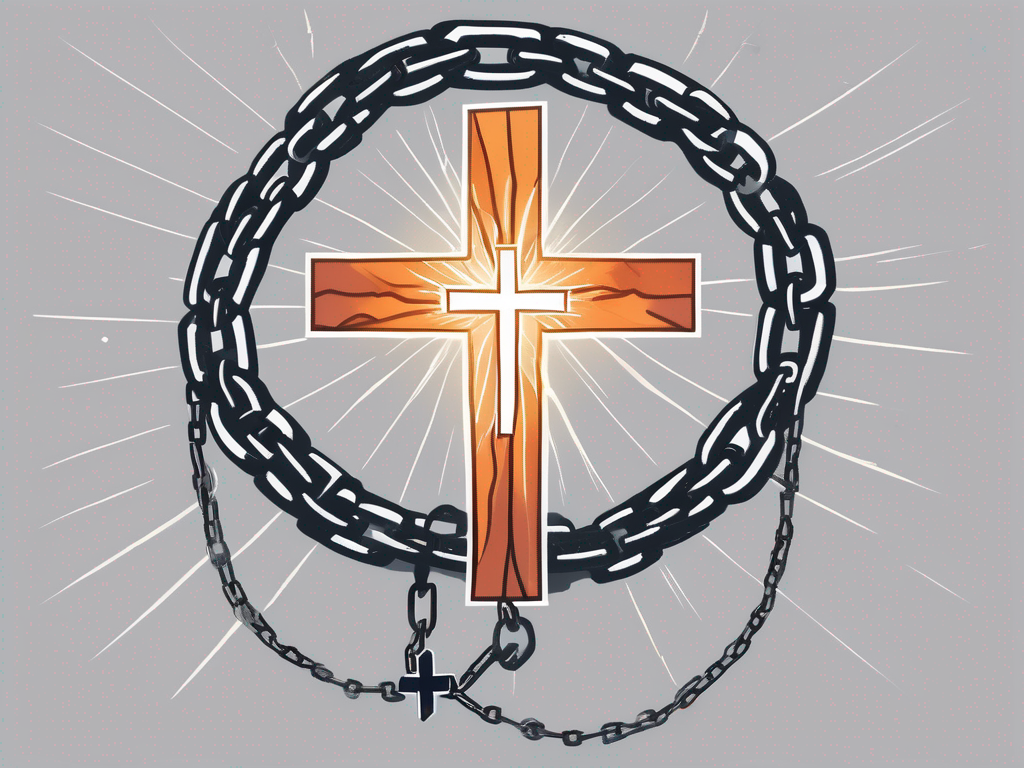Christian revival has played a significant role throughout history in revitalizing the faith and passion of believers. In this article, we will embark on a journey through time, exploring the understanding, early beginnings, great awakenings, modern revival movements, and the global spread of Christian revival.
Understanding Christian Revival
Before we delve into the history, it’s important to define what Christian revival is. Simply put, revival is a spiritual awakening that brings a renewed fervor for God and a restoration of faith in individuals and communities. It is marked by a deep sense of repentance, increased prayer, intense worship, and a hunger for God’s presence.
Christian revival seeks to rekindle the fire of faith and stir believers to live passionately for Christ. It aims to breathe new life into the Church and reawaken the hearts of believers who may have grown spiritually stagnant or lukewarm.
The purpose and impact of revival are multifaceted. Not only does it deepen personal faith and strengthen individual believers, but it also transforms communities, societies, and even nations.
When revival sweeps through a community, it ignites a powerful spiritual transformation. People who were once apathetic or indifferent to matters of faith suddenly find themselves captivated by the love and grace of God. Hearts that were hardened become softened, and lives that were aimless find new purpose and meaning.
During times of revival, churches experience a surge in attendance as people flock to seek God’s presence and encounter His transformative power. The atmosphere is charged with anticipation and expectation, as believers come together to worship, pray, and seek a fresh outpouring of the Holy Spirit.
Revival is not limited to a specific time or place. Throughout history, there have been numerous instances of Christian revival, each with its unique characteristics and impact. From the Great Awakening in the 18th century, which saw a widespread spiritual revival in the American colonies, to the Welsh Revival of 1904-1905, which brought about radical social and moral changes, revival has left an indelible mark on the course of Christianity.
One of the key elements of revival is the emphasis on personal and corporate repentance. As individuals and communities recognize their need for God’s forgiveness and turn away from sin, a profound transformation takes place. This repentance is not merely a surface-level acknowledgement of wrongdoing, but a deep sorrow and desire for change that leads to genuine transformation.
Another hallmark of revival is the heightened focus on prayer. Believers recognize the importance of seeking God’s face and interceding on behalf of others. Prayer meetings become central to the life of the Church, with believers gathering together to cry out to God for His mercy, guidance, and intervention.
Intense worship is also a characteristic of revival. As believers encounter the presence of God in a fresh and powerful way, their worship becomes passionate and heartfelt. Songs of praise and adoration fill the air, as people express their love and gratitude to the One who has brought about such a profound spiritual awakening.
Lastly, revival sparks a hunger for God’s presence and a desire to live in obedience to His Word. Believers are stirred to pursue a deeper relationship with God, to study His Word diligently, and to live out their faith in every aspect of their lives. This hunger for God’s presence fuels a renewed commitment to holiness and a passion for sharing the Gospel with others.
In conclusion, Christian revival is a powerful spiritual awakening that brings about a renewed fervor for God and a restoration of faith. It seeks to rekindle the fire of faith in individuals and communities, transforming lives and impacting societies. Through repentance, prayer, intense worship, and a hunger for God’s presence, revival ignites a deep transformation that leaves a lasting impact on the Church and the world.
The Early Beginnings of Christian Revival
While revival has been a central part of Christianity for centuries, its roots can be traced back to the early church. In the book of Acts, we see the Holy Spirit moving powerfully, igniting the hearts of believers and drawing multitudes to faith in Christ.
The early church experienced a vibrant and dynamic spiritual atmosphere, marked by signs, wonders, and the supernatural. Revival played a vital role in fueling the expansion of Christianity and establishing the foundations of the faith we hold dear today.
The early Christians were not content with a mere intellectual understanding of their faith. They hungered for a genuine encounter with God, desiring to experience His presence and power in their lives. This hunger for God’s presence led them to engage in fervent prayer, seeking His face and surrendering their lives to His will.
As the early church faced persecution and various challenges, revival became a source of strength and encouragement. It propelled the believers forward with unyielding faith and unwavering love for Christ. The early church fathers, such as Augustine, Athanasius, and John Chrysostom, were instrumental in leading revival movements and preserving sound doctrine.
The Role of Revival in the Early Church
Revival in the early church was not just a fleeting emotional experience; it was a transformative movement that impacted every aspect of believers’ lives. It brought about a renewed passion for evangelism, as believers were compelled to share the life-changing message of the Gospel with those around them.
During times of revival, the Holy Spirit would manifest in powerful ways, performing miracles, healing the sick, and delivering people from bondage. These supernatural demonstrations of God’s power served as a testimony to the truth of the Gospel and drew multitudes to faith in Christ.
Revival also played a crucial role in shaping the theology and practices of the early church. As believers sought God’s face and studied His Word, they gained deeper insights into His character and purposes. This led to a greater understanding of the Gospel and the development of sound doctrine that would guide future generations of believers.
Key Figures in Early Christian Revival
Several key figures emerged during this time, who would become catalysts for revival. One such figure was Saint Patrick, the missionary who brought Christianity to Ireland. His zeal for God and commitment to spreading the gospel sparked a spiritual awakening that transformed the nation.
Another influential figure was Saint Francis of Assisi, known for his radical devotion to poverty and his emphasis on simplicity and humility. His life and ministry inspired countless believers to rethink their priorities and pursue a deeper relationship with Christ.
In addition to these well-known figures, there were countless ordinary men and women who played a significant role in early Christian revival. These faithful believers, often facing persecution and hardship, dedicated their lives to prayer, evangelism, and discipleship. Their unwavering commitment to Christ and their willingness to lay down their lives for the sake of the Gospel served as a powerful testimony to the transformative power of revival.
As we reflect on the early beginnings of Christian revival, we are reminded of the rich spiritual heritage we have inherited. The hunger for God’s presence, the fervent devotion to prayer, and the unwavering commitment to the Gospel are all characteristics that continue to shape the Church today. May we, like the early Christians, seek revival in our own lives and allow the Holy Spirit to ignite our hearts with a passion for God and a love for others.
The Great Awakenings
As time progressed, the Church experienced two significant periods of intense revival known as the Great Awakenings. These movements had a profound impact on the religious, social, and political landscape of their respective eras.
The First Great Awakening: A Shift in Religious Thought
The First Great Awakening took place in the 18th century in the American colonies. It was marked by powerful preaching and a strong emphasis on personal conversion.
Revival meetings, led by influential preachers such as George Whitefield and Jonathan Edwards, attracted massive crowds and sparked a spiritual fervor that swept across the colonies. This revival challenged the religious status quo, encouraging individuals to have a personal encounter with God and establish a personal relationship with Jesus.
During the First Great Awakening, the message of salvation and the need for repentance resonated deeply with the colonists. The revival not only transformed their religious beliefs but also had a profound impact on their daily lives. People began to question their actions and sought to live a more virtuous and righteous life.
As the revival spread, it brought about significant social changes. The emphasis on personal conversion and the idea that all individuals could have a direct relationship with God challenged the traditional authority of the Church. This led to a democratization of religious power, as people began to rely less on clergy and more on their own personal experiences and interpretations of Scripture.
The First Great Awakening also had far-reaching political implications. The newfound emphasis on individualism and personal freedom fueled a desire for political independence from Britain. The ideas of equality and liberty that were central to the revival laid the groundwork for the American Revolution.
The Second Great Awakening: A Nationwide Revival
In the early 19th century, the Second Great Awakening emerged as a response to the social and moral challenges faced by America. This movement was characterized by camp meetings, large gatherings, and powerful preaching.
Revival spread like wildfire throughout the country, leading to the conversion of thousands and inspiring social reforms. Important figures like Charles Finney and Lyman Beecher played instrumental roles in preaching the message of repentance and the need for personal salvation.
The Second Great Awakening not only focused on individual salvation but also sought to address societal issues. The revival sparked a renewed interest in social justice and the pursuit of moral reform. It gave rise to various movements, such as the temperance movement, the abolitionist movement, and the women’s suffrage movement.
During this period, women played a significant role in the revival. They were active participants in camp meetings and took on leadership roles within the movement. The Second Great Awakening provided a platform for women to voice their opinions and advocate for their rights, paving the way for the eventual women’s suffrage movement.
The impact of the Second Great Awakening extended beyond religious and social spheres. It also had a profound influence on education. As the revival emphasized the importance of personal piety and moral character, there was a growing demand for education to instill these values in the younger generation. This led to the establishment of numerous colleges and universities across the country.
In conclusion, the Great Awakenings were transformative periods in American history. They brought about significant changes in religious beliefs, social attitudes, and political ideologies. The revivals challenged traditional authority, empowered individuals, and inspired movements for social justice and reform. The legacies of the Great Awakenings continue to shape American society to this day.
Modern Christian Revival Movements
The flame of revival was rekindled in the 20th century with the advent of modern revival movements.
The Pentecostal Revival
In the early 1900s, a powerful move of God known as the Pentecostal Revival occurred. The outpouring of the Holy Spirit, accompanied by speaking in tongues and other supernatural manifestations, brought a renewed focus on the spiritual gifts and the power of the Holy Spirit.
Pentecostalism, with its emphasis on personal spirituality and the Holy Spirit’s work, quickly spread and gave birth to numerous Pentecostal denominations worldwide.
The Charismatic Movement
Building upon the foundation laid by the Pentecostal Revival, the Charismatic Movement erupted in the mid-20th century. This movement emphasized the continuing work of the Holy Spirit and the availability of spiritual gifts for all believers.
Charismatic Christianity transcended denominational boundaries, renewing the passion and zeal for God in both traditional and non-denominational churches. It brought a fresh hunger for God’s presence, expressive worship, and a deeper understanding of Scripture.
The Global Spread of Christian Revival
While revival has touched many parts of the world, the impact of Christian revival has been particularly significant in Europe, Africa, and Asia.
Revival Movements in Europe
Europe has seen numerous revival movements throughout history, awakening faith and transforming communities. From the Welsh Revival of 1904 to the Hebrides Revival in Scotland and the recent revival movements in Eastern Europe, God has brought renewal and spiritual awakening to this diverse continent.
The Spread of Revival in Africa and Asia
Christian revival has also swept through Africa and Asia, leading to explosive growth in the Church. Revival movements like the East African Revival, which started in the 1930s, and the Chinese House Church movement, which emerged in the 20th century, have revitalized the faith of believers and resulted in widespread conversions.
Moreover, in recent years, countries like South Korea and Brazil have experienced significant revival and have become global centers for vibrant Christianity.
In Conclusion
The history of Christian revival is a testament to God’s faithfulness and His desire to continually awaken and revitalize His people. From the early beginnings in the early church to the great awakenings and modern revival movements, Christian revival has transformed individuals, communities, and nations.
As we reflect on this revitalizing journey, let us be inspired to seek God’s presence, pursue personal renewal, and actively participate in the ongoing work of revival in our world today.












